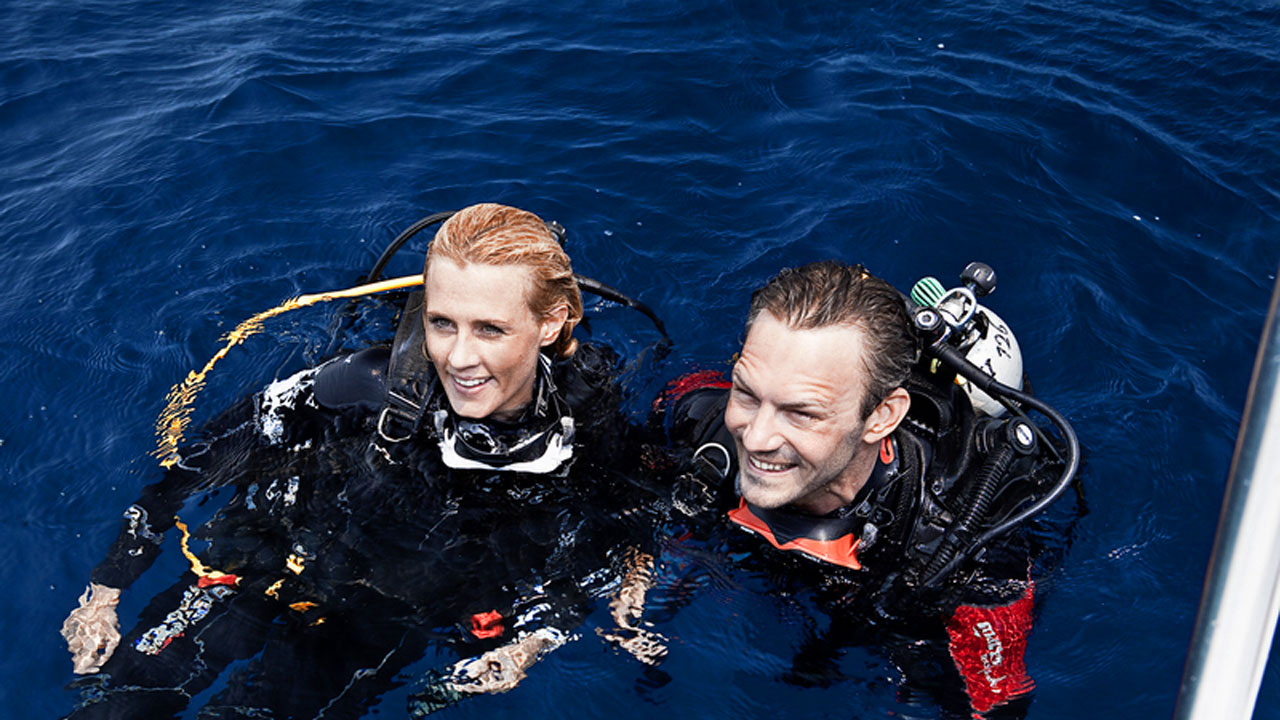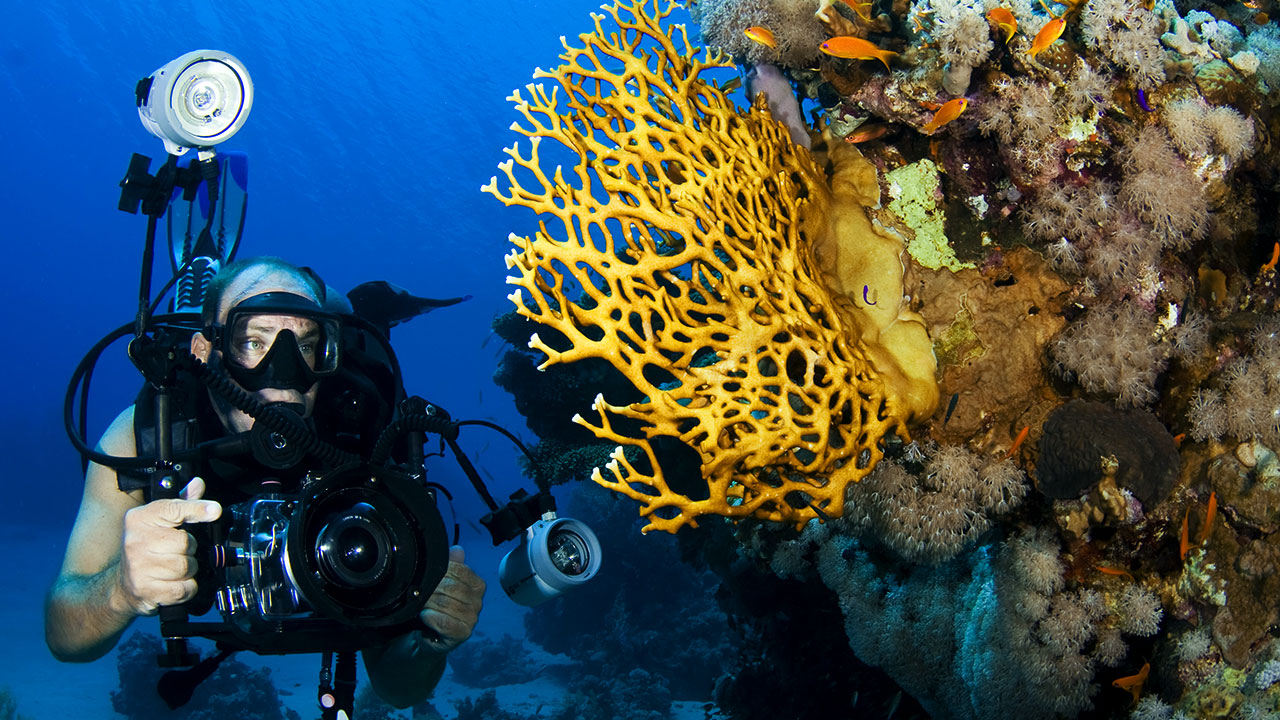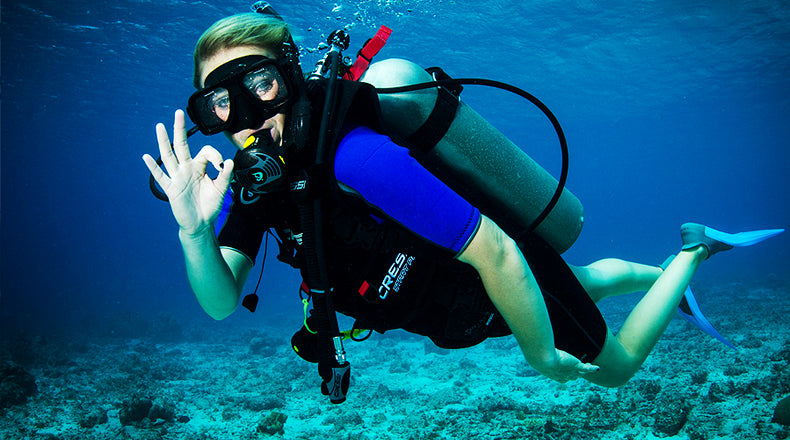Altitude Diving

For many people, altitude diving means plunging into the crystal clear waters of a picturesque lake, surrounded by the snow-capped mountains. In reality, however, you don’t always have to climb the Alps in order to experience diving at an altitude and even feel the impact of the reduced surface pressure. In fact, if you go to Montana, Wyoming or Idaho, essentially all of your dives in those states will be considered altitude dives!
By definition, altitude diving is underwater diving using scuba equipment where the surface is 300 meters (1000 feet) or more above the sea level. Why is this significant? Well, at altitude, the atmospheric pressure is lower than at sea level, therefore, the relative pressure reduction at the end of an altitude dive is greater. This leads to an increased risk of decompression sickness and shorter no-decompression times compared to the same dive profile at sea level.
Although, altitude diving is not that different from regular ocean or freshwater diving, there are a few things you need to pay attention to.
1. Determine Your Theoretical Ocean Depth
As it was noted earlier, the no-decompression times for altitude dives are lower than those for dives at sea level. Many divers rely on dive computers to generate real-time limits, and most modern dive computers can either convert automatically or be set for dives at certain altitude. However, if you use dive tables, you need to be able to convert the maximum depth you are planning to reach into the Theoretical Ocean Depth, which is essentially a way of reducing the time allowed by using the time limit for a deeper dive. Generally speaking, the higher the altitude, the more you will need to add to your planned actual depth when determining your time limit.
In order to convert your dives at altitude to equivalent dives in the ocean you will need to refer to tables from the PADI Adventures in Diving manual or the instructor outline for the Altitude Diving Specialty course.
You can also find the Theoretical Ocean Depth conversion table below.
|
Actual Depth (mfw) |
Theoretical Ocean Depth (msw) at Various Altitudes (of meters above sea level) |
|||||||||
|
300 |
600 |
900 |
1200 |
1500 |
1800 |
2100 |
2400 |
2700 |
3000 |
|
|
0 |
0 |
0 |
0 |
0 |
0 |
0 |
0 |
0 |
0 |
0 |
|
2 |
2 |
2 |
2 |
2 |
2 |
2 |
3 |
3 |
3 |
3 |
|
4 |
4 |
4 |
4 |
4 |
5 |
5 |
5 |
5 |
5 |
6 |
|
6 |
6 |
6 |
7 |
7 |
7 |
7 |
8 |
8 |
8 |
8 |
|
8 |
8 |
8 |
9 |
9 |
9 |
10 |
10 |
10 |
11 |
11 |
|
10 |
10 |
10 |
11 |
11 |
12 |
12 |
13 |
13 |
14 |
14 |
|
12 |
12 |
13 |
13 |
13 |
14 |
15 |
15 |
16 |
16 |
17 |
|
14 |
14 |
15 |
15 |
16 |
16 |
17 |
18 |
18 |
19 |
20 |
|
16 |
16 |
17 |
17 |
18 |
19 |
19 |
20 |
21 |
22 |
23 |
|
18 |
18 |
19 |
20 |
20 |
21 |
22 |
23 |
23 |
24 |
25 |
|
20 |
20 |
21 |
22 |
22 |
23 |
24 |
25 |
26 |
27 |
28 |
|
22 |
22 |
23 |
24 |
25 |
26 |
27 |
28 |
29 |
30 |
31 |
|
24 |
24 |
25 |
26 |
27 |
28 |
29 |
30 |
31 |
33 |
34 |
|
26 |
26 |
27 |
28 |
29 |
30 |
31 |
33 |
34 |
35 |
37 |
|
28 |
28 |
29 |
30 |
31 |
33 |
34 |
35 |
37 |
38 |
39 |
|
30 |
30 |
31 |
33 |
34 |
35 |
36 |
38 |
39 |
41 |
42 |
|
32 |
32 |
33 |
35 |
36 |
37 |
39 |
40 |
42 |
43 |
45 |
|
34 |
34 |
36 |
37 |
38 |
40 |
41 |
43 |
44 |
46 |
48 |
|
36 |
36 |
38 |
39 |
40 |
42 |
44 |
45 |
47 |
49 |
51 |
|
38 |
38 |
40 |
41 |
43 |
44 |
46 |
48 |
50 |
51 |
53 |
|
40 |
40 |
42 |
43 |
45 |
47 |
48 |
50 |
52 |
54 |
56 |
Once you find your Theoretical Ocean Depth (TOD), you can use your regular Recreational Dive Planner (RDP) to correctly plan your altitude dives. If you want to achieve even more accurate results, you have to take into account the density of water you are planning to dive in. The density of freshwater (1 kg per liter), for instance, is lower than that of seawater (1.027 kg per liter), whereas the water density in some saltwater lakes can be higher, and the higher the density, the shallower you will experience each additional atmosphere of pressure.
2. Learn How Your Depth Gauge Functions
Another important factor to consider is how your depth gauge works at an altitude and in fresh water. For example, mechanical depth gauges with a bourdon tube will read shallower than actual depth, while mechanical depth gauges that use a capillary tube will read deeper than actual depth. Take the time to go through the buyer's manual that came with the gauge and find out whether it can be calibrated before the dive at an altitude.
3. Plan Your Safety Procedures
Diving at altitude requires careful planning and implementation of altitude-correction factors. In order to learn more about the proper organization, procedures and techniques, consider taking an altitude diver specialty course. When actually going altitude diving, make sure you are equipped with an adequate supply of oxygen for first aid. Also, make clear plans for emergency evacuation to a medical facility with a hyperbaric chamber.
To minimise the risk of decompression sickness, it is recommended that you take additional prophylactic measures. In particular,
- try to follow a suitable pre-dive exercise regime;
- consider introducing additional oxygen into your breathing mix and removing inert gas from it;
- minimize the diver workload during and after the dive;
- use an ascent rate reference such as a weighted line or suspended trapeze, etc.
Interesting Fact
To end with, here’s an interesting fact, although most altitude diving is conducted below 8,000 feet (2500 meters), an altitude generally well tolerated by healthy individuals, the highest recorded altitude at which a scuba dive had been conducted was 20000 feet (6000 meters). The record was set in 2007 by Philippe Reuter, Claudia Henríquez and Alain Meyes, who dove the small lagoon located near the summit of Pili Volcano.




